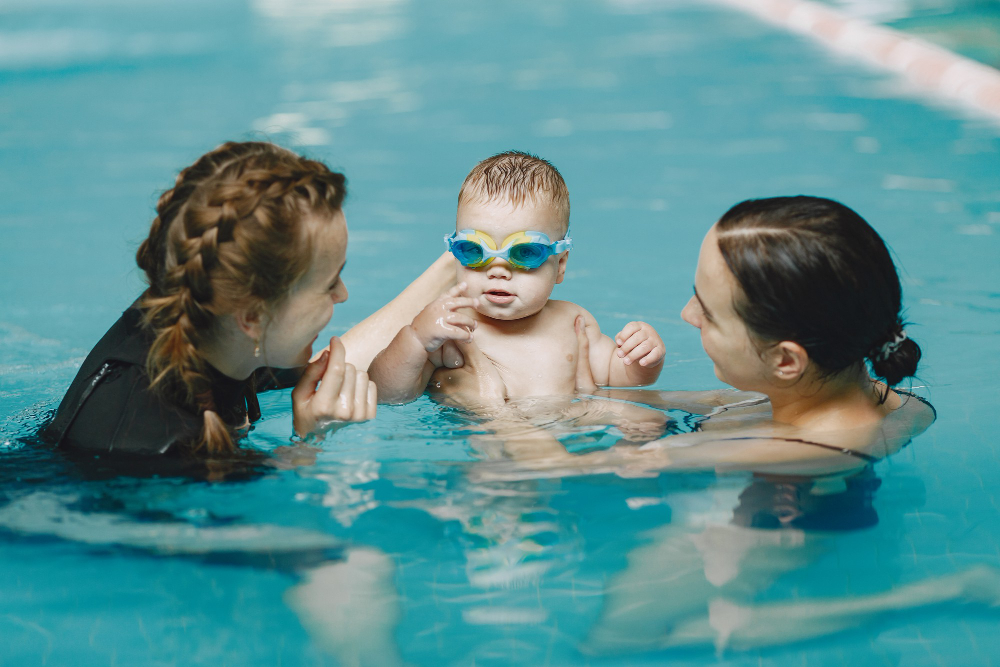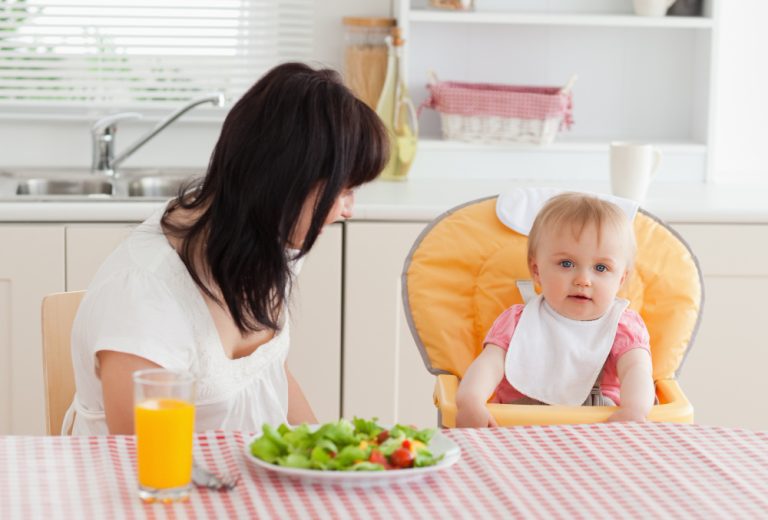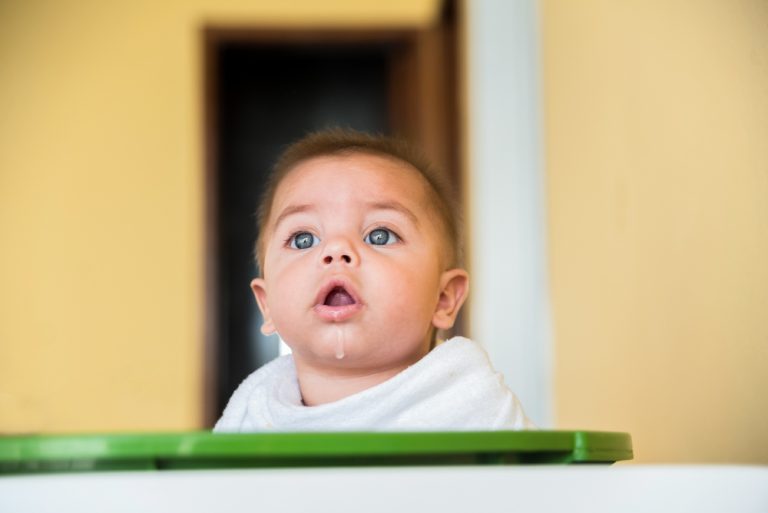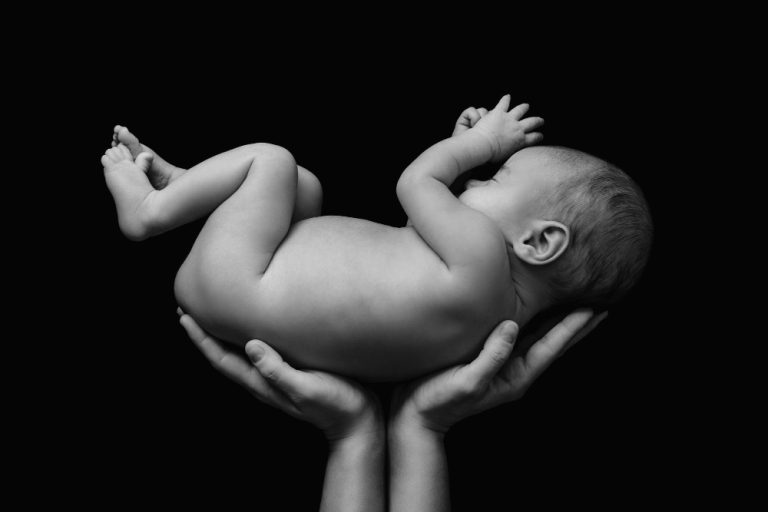When Can Babies Learn To Swim: Introducing Swimming to Baby
Have you ever wondered when can babies learn to swim? Are you a new parent who wants to introduce your little one to the joys of swimming, but you’re not sure where to start?
As parents, we all want the best for our little ones, and one essential aspect is ensuring their safety and equipping them with valuable life skills from a tender age. So, what is the ideal age to introduce babies to the world of swimming? Let’s find out together!
In this blog, we delve into the pivotal question of the best age to introduce babies to swimming. From the recommended timeframe for starting swim lessons to the benefits of early water exposure, we will uncover the importance of nurturing water confidence in infants.
Gain insights on water safety measures, choosing the right swim class for your baby, and techniques for teaching basic water skills.
Join us on this informative journey to learn when can babies learn to swim and to understand the significance of swimming and the positive impact it can have on their development.
Introduction to Baby Swim Lessons
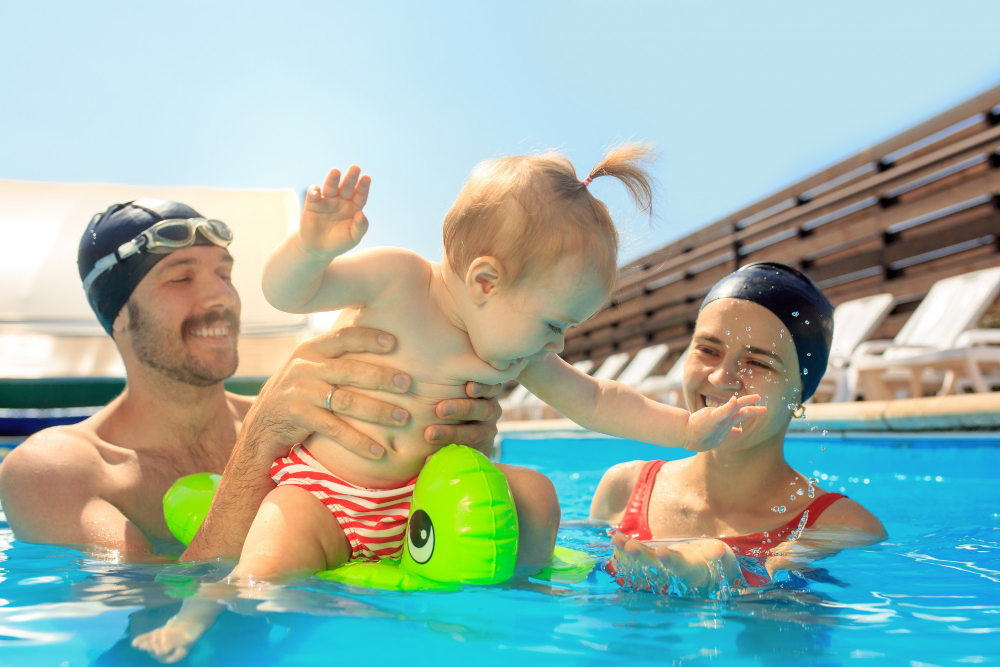
Introducing babies to swimming at the right age is crucial for their development and safety. Not only does it promote early water exposure, but it also helps in building water confidence and essential life skills.
Here’s why baby swim lessons are so important:
1. Developmental Benefits
- The sensory experience of being in the water stimulates babies’ cognitive and motor skills.
- It aids in the development of coordination, balance, and muscle strength.
- Swimming also promotes better sleeping patterns and boosts overall physical and mental well-being.
2. Water Safety
- Teaching babies basic water skills from an early age significantly reduces the risk of drowning.
- While it is essential to never leave a baby unattended in or near water, introducing them to swim lessons equips them with foundational water safety knowledge and skills, providing an added layer of protection.
3. Parent-Child Bonding
- Baby swim lessons offer a fantastic opportunity for parents to connect and bond with their little ones.
- It creates a nurturing and enjoyable environment where parents can facilitate trust, communication, and a sense of security with their babies.
4. Confidence and Independence
- Learning to swim early on instills confidence and independence in babies.
- It teaches them to be comfortable and feel at ease in the water, which can positively impact their overall self-esteem as they grow older.
Introducing babies to swimming at the right age allows them to develop vital skills and lays the foundation for a lifetime of water enjoyment and safety. It is crucial to choose reputable swim programs that prioritize safety and use age-appropriate teaching techniques.
So, let’s explore when can babies learn to swim to start their swim lessons and ensure a positive and rewarding experience for both parents and babies.
The Best Age to Start Swim Lessons
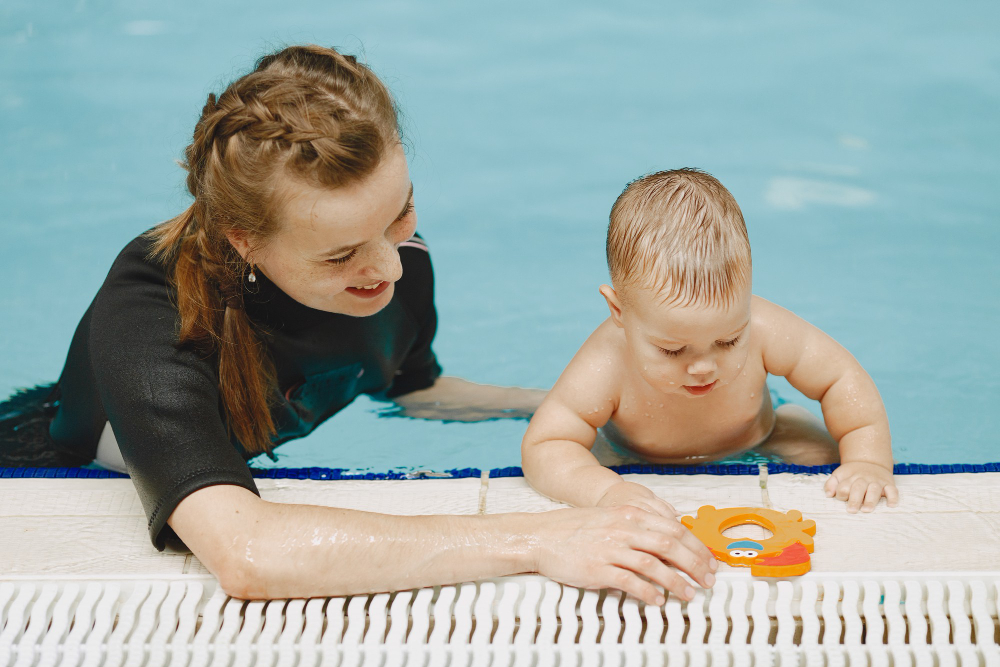
When it comes to introducing babies to swimming, timing is crucial. While it’s important to promote water safety and ensure a positive experience, determining the best age for babies to start swimming lessons can be a common concern for parents.
Based on expert recommendations and studies, here’s a breakdown of the recommended age range for babies to undertake their swimming journey.
1. Infancy Stage (3-6 Months)
- Experts, including the American Academy of Pediatrics, suggest that babies can begin swim lessons as early as 3 months old.
- At this age, infants are still in the infancy stage, meaning they possess a natural disposition to water.
- The exposure to the aquatic environment during this period helps them feel comfortable and learn to move in the water.
2. Babyhood Stage (6-12 Months)
- As babies enter the babyhood stage, typically around 6 months old, they start to develop crucial motor skills and coordination.
- This is an ideal age to introduce structured swim lessons.
- With the help of trained instructors and tailored activities, babies in this age range can build water confidence, learn submersion techniques, and develop basic swimming skills.
3. Toddler Stage (12+ Months)
- Once babies enter the toddler stage, around 12 months old and beyond, their physical and cognitive abilities become more advanced.
- At this point, they can engage in more interactive swim lessons that focus on improving their swimming technique and water safety awareness.
- These lessons help toddlers refine their skills, including kicking, floating, and even rudimentary swim strokes.
It’s important to note that these age ranges are general guidelines, and each child’s development may vary. Some babies may demonstrate readiness earlier, while others may benefit from waiting a little longer. Parental discretion and observation of a child’s individual progress are crucial factors to consider.
By choosing the right age to start swim lessons, parents can give their babies a head start in becoming confident and capable swimmers. This investment not only promotes safety but also instills a lifelong love and respect for the water.
Remember, always prioritize your baby’s well-being and comfort during swim lessons. Consult with qualified instructors and follow safe practices to ensure a positive and enjoyable experience for both you and your little one.
Water Safety for Babies
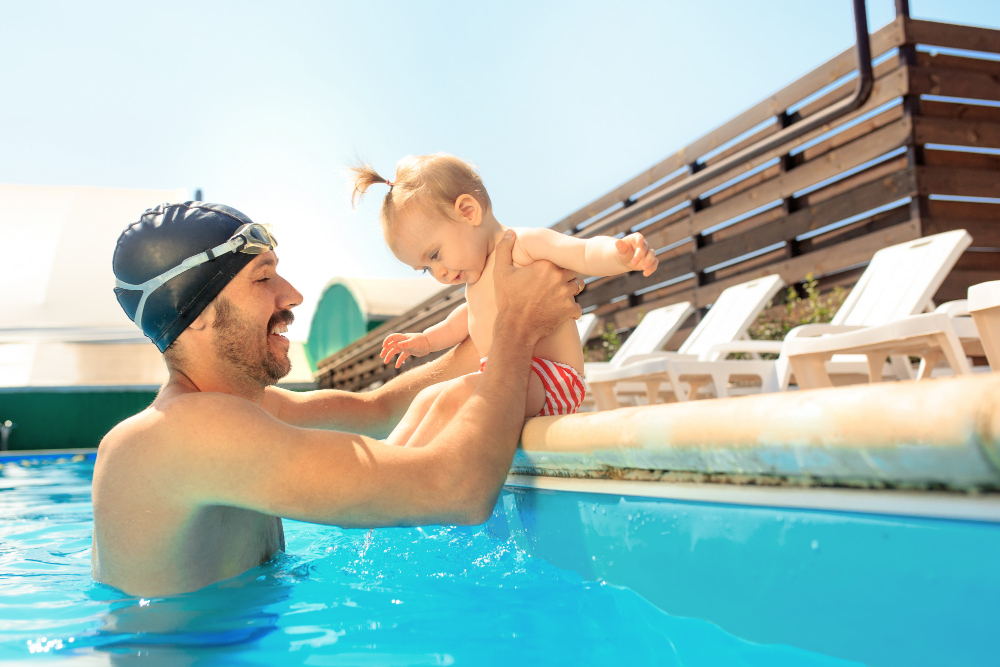
When introducing babies to swimming activities, ensuring water safety is of utmost importance. Here are some essential tips and guidelines to keep in mind:
Never Leave Baby Unattended
Always supervise your baby closely when near water, whether it’s in a pool, bathtub, or any other water source. Never leave your baby unattended, even for a moment.
Start Early with Parent-Baby Water Classes
Consider enrolling in parent-baby water classes, where you can learn essential water safety skills and techniques specific to babies. These classes provide a supportive environment and guidance from experienced instructors.
Maintain Constant Touch Supervision
Practice touch supervision, which means always maintaining physical contact with your baby while in the water. This ensures that you are immediately responsive to your baby’s needs and can provide support if necessary.
Ensure Proper Pool Fencing and Safety Measures
If you have a swimming pool at home, install a secure pool fence to prevent your baby from accessing the pool area unsupervised. Additionally, keep pool gates locked and implement other safety measures, such as door alarms and pool covers.
Use Appropriate Floating Devices
When in the water, use approved flotation devices designed specifically for babies. These devices should provide adequate support and ensure your baby’s safety and comfort.
Gradually Introduce Water Play
Start with gentle water play activities, such as pouring water over your baby’s hands, before moving on to more extensive water exposure. This helps your baby gradually become comfortable with the sensation of water.
Be Mindful of the Water Temperature
Ensure that the water temperature is suitable for your baby. It should be warm enough to prevent discomfort or shock but not too hot. Aim for a temperature around 32-34 degrees Celsius (90-93 degrees Fahrenheit).
Teach Basic Water Skills
Teach your baby basic water skills, such as holding onto the side of the pool, kicking their legs, and blowing bubbles. These skills help build water confidence and promote safer interactions with water.
By following these essential water safety tips, you can create a safe and enjoyable environment for your baby during swimming activities. Remember, water safety is a crucial aspect of introducing babies to swimming, ensuring a positive and rewarding experience for both parent and child.
Choosing the Right Swim Class for Babies

When it comes to choosing a swim class for your baby, there are several important factors to consider. Ensuring that your little one has a positive and safe experience in the water is essential. Here are some key points to keep in mind:
Instructor Qualifications
- One of the first things you should look for when selecting a swim class for your baby is the instructors’ qualifications.
- Check if they have certification from reputable organizations such as the American Red Cross or other recognized swim teaching institutions.
- Trained instructors will have the knowledge and expertise to provide a safe and effective learning environment for your baby.
Facilities and Amenities
- The swim class’s facilities and amenities play a crucial role in your baby’s comfort and enjoyment during swim lessons.
- Look for clean and well-maintained pools specifically designed for infants and young children.
- Additionally, consider the availability of changing rooms, diaper-changing stations, and comfortable seating areas for parents.
- A welcoming and hygienic environment will contribute to a positive swimming experience for both you and your baby.
Class Size and Structure
- Take into account the class size and structure when choosing a swim class.
- Small class sizes are ideal as they allow for more individual attention and personalized instruction for your baby.
- Look for swim classes that follow a structured curriculum appropriate for your baby’s age and development.
- This will ensure that they are receiving appropriate instruction and gradually progressing in their water skills.
Parent Engagement and Involvement
- Some swim classes encourage parent engagement and involvement during the lessons.
- Participating in water activities with your baby can help strengthen the bond between you and your little one while also providing a sense of security for them.
- Consider whether you prefer a class that emphasizes parent-child interaction or one that focuses more on independent learning for your baby.
Choosing the right swim class for your baby is an important decision that can shape their early experiences with water and swimming. By considering factors such as instructor qualifications, facilities, class size and structure, and parent engagement, you can ensure that your baby receives a swim lesson that is both enjoyable and beneficial for their development.
Remember, the goal is to provide a supportive and safe environment where your baby can learn and build confidence in the water.
Benefits of Early Water Exposure
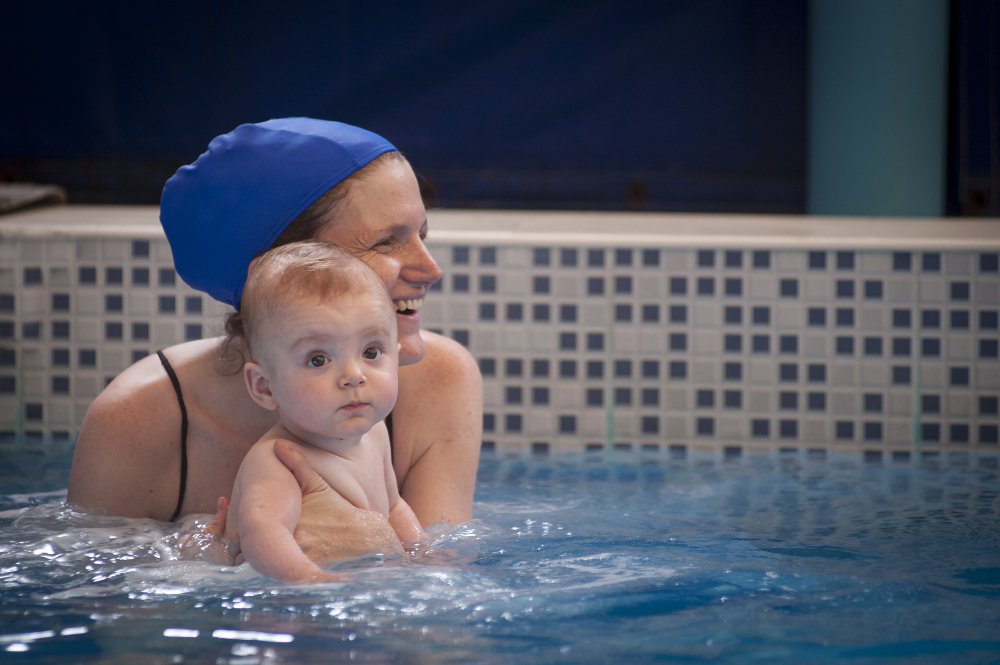
Early water exposure for babies offers a multitude of benefits that contribute to their overall development. Here are some of the advantages of introducing babies to swimming at an early age:
Improved Cognitive Development
- Water activities stimulate the brain and promote cognitive development in babies.
- The water environment encourages sensory exploration and enhances brain connections.
- Babies exposed to early water experiences tend to show improved problem-solving skills, spatial awareness, and mathematical abilities later in life.
Enhanced Motor Skills
- Swimming allows babies to move freely in a supportive and buoyant environment, promoting the development of their motor skills.
- The resistance of water strengthens their muscles and improves coordination and balance.
- Through activities like kicking and splashing, babies also develop core strength and improve their overall physical abilities.
Boosted Confidence and Independence
- Early water exposure helps babies develop water confidence and independence.
- By learning to navigate and enjoy water at a young age, they become more comfortable and less fearful around water as they grow older.
- This sense of confidence can translate into other areas of their lives, cultivating a positive mindset and self-assurance.
Bonding and Socialization
- Swimming with babies creates opportunities for bonding and social interaction.
- Parent-baby water classes and swim lessons provide a supportive and enjoyable environment for parents to connect with their little ones.
- Additionally, babies get to interact with other children their age, promoting early socialization skills.
Water Safety Skills
- Introducing babies to swimming at an early age also serves a vital purpose – teaching essential water safety skills.
- Babies who are familiar with water and have learned basic water skills are more likely to navigate water hazards and react appropriately in water-related situations.
- This knowledge is crucial for the safety of babies around water.
In conclusion, early water exposure offers numerous benefits for babies, ranging from improved cognitive development and enhanced motor skills to boosted confidence, socialization, and water safety skills.
By considering these advantages, parents can make an informed decision about introducing their little ones to swimming at the right age, prioritizing their overall well-being and development.
Teaching Basic Water Skills to Babies
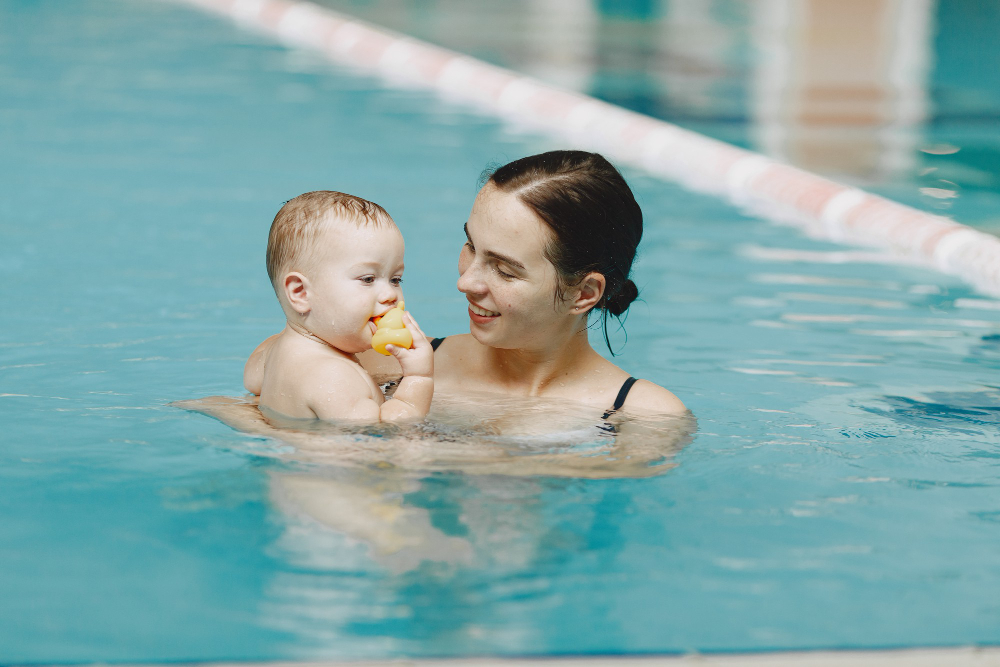
Teaching babies basic water skills at an early age is not only a fun and enjoyable experience but also a crucial step in promoting their water confidence and safety. Here are some practical tips and techniques for parents to consider when introducing their babies to the water:
1. Start with gentle water exposure
- Begin by gradually acclimating your baby to the water.
- Start with short sessions of water play in a controlled and safe environment, such as a baby pool or bathtub.
- This allows them to get comfortable with the sensation of being in the water.
2. Support and hold your baby securely
- While in the water, always maintain a secure hold on your baby.
- Support their head and neck, ensuring that their face remains above the water at all times.
- This will help them feel secure and develop trust in the water environment.
3. Encourage floating exercises
- Teaching babies to float on their backs is an essential water safety skill.
- Gently support their head and back while allowing their body to float on the water’s surface.
- This helps them develop a natural sense of buoyancy and relaxation in the water.
4. Practice kicking movements
- Encourage your baby to kick their legs while in the water.
- Hold them under their arms and support their body as they kick their legs, simulating a swimming motion.
- This helps develop their leg strength and coordination.
5. Incorporate water toys and games
- Make the water experience enjoyable by using colorful water toys and engaging in simple games.
- This not only enhances their motor skills but also makes the learning process more fun and interactive.
6. Gradually introduce submersion
- Once your baby is comfortable with water play and floating exercises, you can gradually introduce gentle submersion.
- They should start by gently pouring water over their heads and gradually progress to brief submersions, keeping the experience positive and supportive.
Remember to create a safe and supportive environment by always supervising your baby closely during water activities. Additionally, consider enrolling in reputable baby swim lessons or water play classes where certified instructors can guide you and your baby through the learning process.
Teaching babies basic water skills provides a strong foundation for their future swimming abilities and instills a lifelong love for water activities.
By following these tips and techniques, parents can help their babies develop essential water skills while cultivating a positive and enjoyable experience in the water.
Ensuring Water Safety at Home
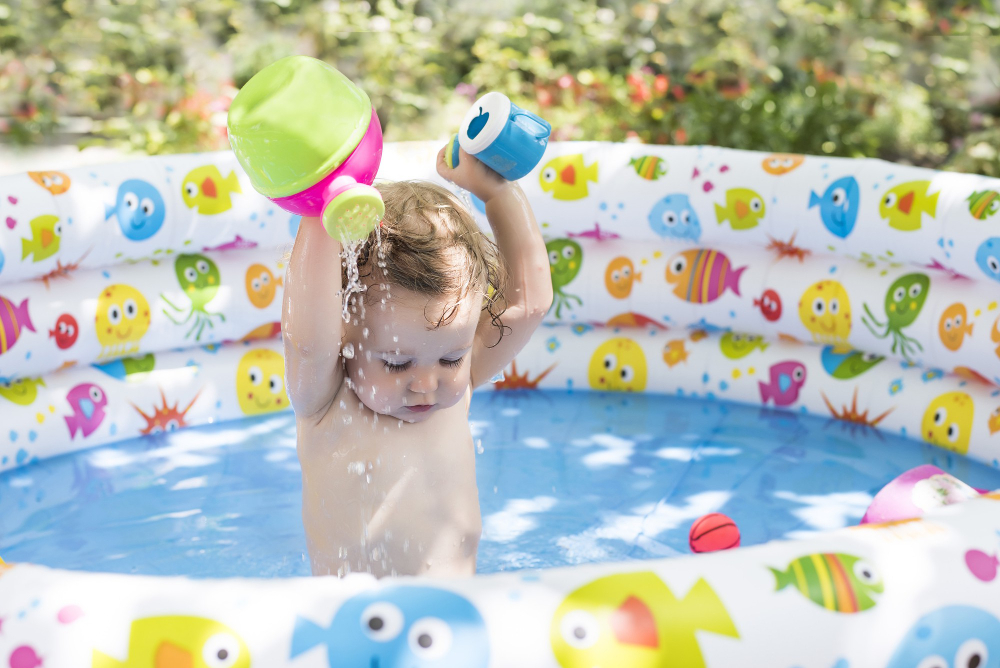
Water safety is of the utmost importance when introducing babies to swimming. As parents, it is crucial to maintain water safety precautions, especially at home, where accidents can happen unexpectedly.
Here are some essential tips to ensure a safe environment for your little ones:
Supervision is Key
- Always provide constant and vigilant supervision whenever your baby is near water.
- This means keeping a close eye on them at all times, even if they are in a bathtub or a small pool.
- Remember, babies can drown in just a few inches of water, so never leave them unattended.
Secure All Water Sources
- It is essential to secure all water sources in your home.
- Always keep bathroom doors closed and locked to prevent unsupervised access to the bathtub and toilet.
- Additionally, secure outdoor water sources, such as pools and hot tubs, with proper fencing and barriers.
Baby-Proof the Home
- Baby-proofing your home plays a crucial role in water safety.
- Install safety locks on cabinets where cleaning products or chemicals are stored, as well as on toilet lids.
- Keep buckets, containers, and other water-holding objects out of your child’s reach.
Learn CPR and First Aid
- Knowledge of CPR and first aid can be life-saving in emergencies.
- Consider taking a certified course to ensure you are prepared to respond appropriately in case of an accident.
- The American Red Cross offers courses that specifically cater to infant and child CPR.
Educate Family Members and Caregivers
- Ensure that family members and caregivers are aware of water safety protocols and understand the importance of supervision.
- Clearly communicate the rules and precautions to everyone involved in caring for your baby.
By following these water safety measures at home, you can create a secure environment for your baby. Remember, accidents can happen in a matter of seconds, so it’s crucial to be proactive and diligent when it comes to water safety. Stay vigilant and prioritize your baby’s safety at all times.
The Final Note: When Can Babies Learn To Swim?
To summarize, introducing babies to swimming at the appropriate age can have numerous benefits for their development and safety. By starting swim lessons at the right time, parents can help their little ones become comfortable in the water and develop essential water skills.
We have discussed the recommended age range for babies to start learning how to swim, which typically falls between 6 months to 2 years old. This is when infants have the physical and cognitive abilities to participate in swim activities and begin building their water confidence.
Water safety is a paramount concern when it comes to introducing babies to swimming. Parents should always ensure supervision, follow water safety guidelines, and choose a swim class that emphasizes safety measures.
By enrolling babies in appropriate swim classes, parents can provide a supportive environment for their little ones to learn and grow in the water.
Early water exposure offers numerous benefits for babies, including enhanced cognitive development and improved motor skills. It also instills a sense of confidence and enjoyment in swimming, setting a foundation for a lifelong love of water activities.
When can babies learn to swim, is a common question that many parents ask. Introducing babies to swimming at the right age is a valuable and rewarding experience.
Consider the guidelines and recommendations provided in this article, and take the necessary steps to ensure a safe and enjoyable journey into the world of swimming for your little one.

